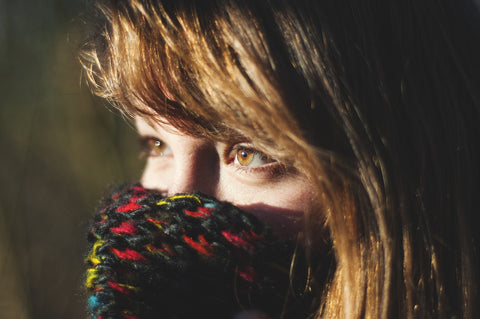The Power Of Light: An Illuminating Seasonal Affective Disorder Treatment February 8, 2017 00:00

Now that the holidays are winding down and the winter weather is fully upon us, a significant portion of the population may feel their moods start to take a turn.
And though it may be tempting to put off addressing these feelings, the truth is if you are one of these individuals, you may be one of the 16 million US citizens experiencing seasonal affective disorder.
But don’t worry! Treatment has become easier than ever. And what’s more, all it takes is a little bit of light.
What is Seasonal Affective Disorder?
Seasonal affective disorder, also known as SAD, is a type of depression that usually occurs each year around the gloomy winter months. While some may attribute the winter blues simply to a dissatisfaction with the change of weather, SAD is accepted as a very real medical disorder in the medical community that affects nearly 5% of the population every single year.
The term was first coined by Norman E. Rosenthal, M.D., and his associates in the early 1980s when Rosenthal noticed his own depression during the dark winter months in the northern United States. Although Rosenthal’s research on the subject was first met with intense skepticism, SAD is now widely recognized and treated by many medical professionals.

What causes SAD?
Since seasonal affective disorder is still being studied in the scientific community, its exact causes aren’t yet fully known. However, there are several factors which experts believe may contribute to the development of this disorder:
- Melatonin Production – Melatonin is a chemical produced by the body that helps regulate sleep patterns as well as your mood. The more melatonin you have, the sleepier you become. In fact, melatonin is even sold in many stores as a natural alternative to sedatives like Ambien and Lunesta.
- Serotonin Production – Serotonin is another powerful chemical your body produces. It plays a major role in mood and its production can be stunted by the onset of winter.
- Circadian Rhythm – Also known as your internal clock, the circadian rhythm can also be thrown off during the darker months which, in turn, can lead to depression.
Though there are undoubtedly other factors at play, the alteration of these three bodily processes are considered to be directly linked with SAD.
So, what is it about winter that changes them? Is it the cold? The precipitation? Something in the air?
Nope, nope, and, well, maybe a little. It’s the light.
As you may have read before, the natural processes of our bodies are highly dependent on how much light we are exposed to. Various levels of lighting can leave us feeling anywhere from energized and poised to take on the day to sleepy and ready to turn in for the night. Part of this is due to the fact that light directly affects the above listed factors.
When some individuals are regularly exposed to less light throughout the day, such as in the winter months, a combination of altered melatonin and serotonin production as well as a confused circadian rhythm can lead to the development of SAD.

What treatment options are there?
One of the best ways to treat a condition brought on by a lack of sunlight is by, you guessed it, being exposed to more sunlight! Now, the problem is that finding actual sunlight during this gloomy time of the year can be problematic. Plus you have to find the time to do it; no easy feat for some
That’s where light boxes come in. Light boxes are lighting elements designed specifically for treating sufferers of seasonal affective disorder. They provide an alternative source of high-powered lighting for individuals who may not have the flexibility to spend more time outdoors or who are on a side of the earth that the sun simply refuses to visit (we’re looking at you Seattle).
And in addition to being incredibly convenient, they’re remarkably effective too, providing depression relief on the same level as antidepressants in some cases.
What’s involved in Light Therapy?
Though specific treatment guidelines vary from case to case and should always be determined with the help of a qualified doctor, many sufferers of SAD find their symptoms are dramatically reduced by using a light box with an output of at least 10,000 lux for 30 minutes a day. And since treatment consists of simply exposing your eyes to the light, many patients are able to watch TV, read, or work during sessions.
While you may be tempted to simply turn up your own home lighting to combat seasonal affective disorder, achieving the required light output can be quite difficult without specialized lighting.
In addition to the brightness requirements, many people at one time believed the lighting had to contain the full spectrum of colors just like natural sunlight. Recent research has shown, though, that SAD sufferers can actually experience the same benefits from a particular band of blue light alone.
The result of this finding, along with dropping manufacturing costs, has led to a surge in LED light box production since LEDs are able to produce a very precise type of light as opposed to full spectrum light. And not only that, LEDs are far more efficient in terms of energy usage as well, meaning cheaper costs as well as lower electricity bills.
Because of the variety and efficacy of treatment options out there, sufferers of seasonal affective disorder have more hope than ever to get over those winter blues.
So there you have it. Just another way LEDs are revolutionizing the lighting industry and helping to brighten up your world!
Let us know what you think!
Do you have any tips for sufferers of seasonal affective disorder? How has using light therapy changed the way you go through the winter months? Let us know in the comment section below and don’t forget to brighten up your day with the Flux Smart product line!
